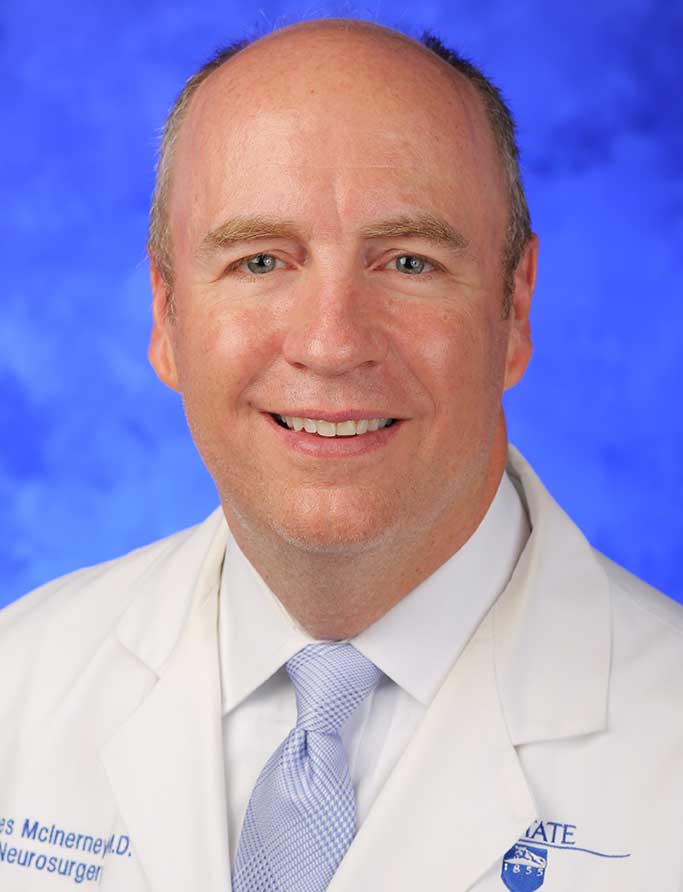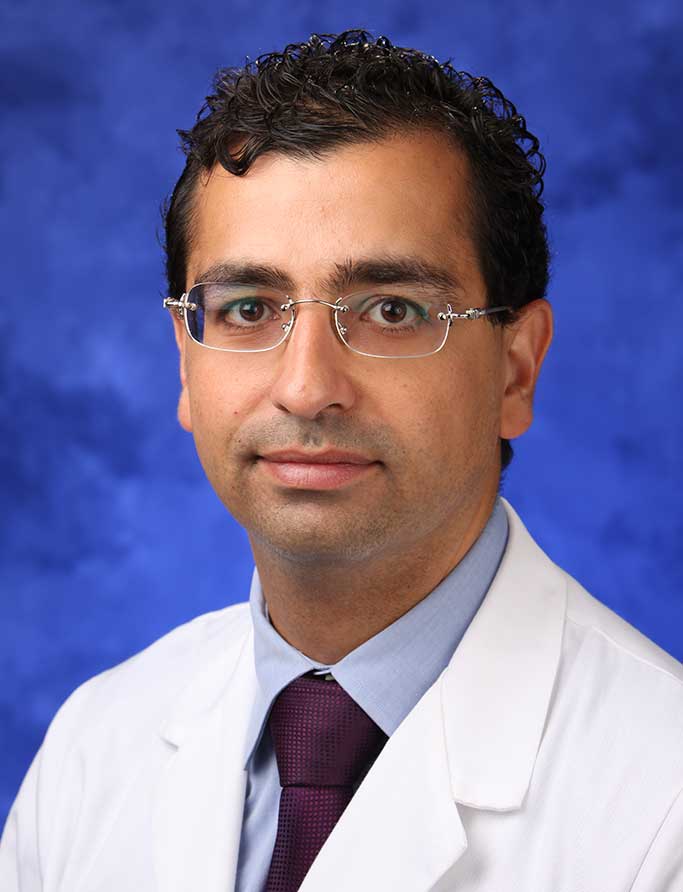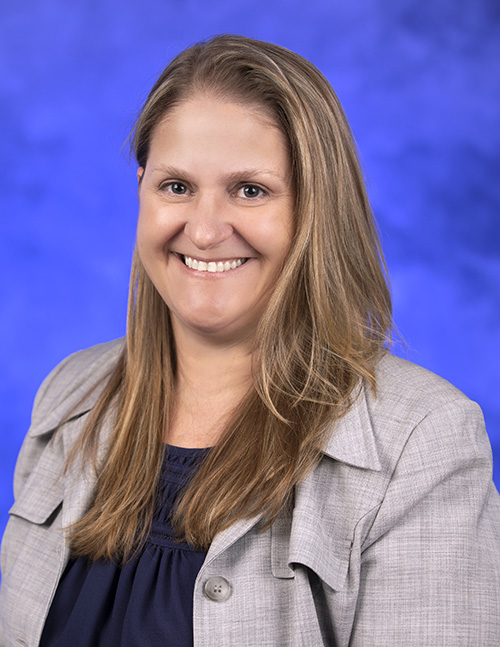Jump to topic
Search
Program Details
A collegial, collaborative and supportive environment exists among the faculty, residents, nurses and staff of Penn State Neurosurgery.
More than 20 full-time clinical faculty members in the Department of Neurosurgery perform about 4,000 neurosurgical procedures per year, including endovascular and radiosurgical cases. Neurosurgery residents at Penn State Health Milton S. Hershey Medical Center receive excellent clinical training in all areas of neurosurgery, including endovascular and vascular neurosurgery, epilepsy surgery, functional neurosurgery, neuro-oncology and skull base surgery, neurocritical care, neurotrauma, pediatric neurosurgery, peripheral nerve surgery, radiosurgery and spine surgery, under the direction of nationally recognized and fellowship-trained neurosurgery faculty members.
The department also has six fellowships (endovascular, functional, neurocritical care, neuro-oncology, peripheral nerve and spine) accredited by the Society of Neurological Surgeons’ Committee for Advanced Subspecialty Training (CAST). In order to assure that these fellowships do not dilute the operative experience of departmental residents, with the exception of neurocritical care, they are offered only as enfolded fellowships to participants in the Neurosurgery Residency.
Residents finish their training fully equipped to enter the neurosurgical practice of their choice. They are well-trained in the preoperative, operative and postoperative care of all neurosurgical patients, with an excellent understanding of basic, translational and clinical neuroscience.
Learn More about the Residency
It is the mission of the Neurosurgery Residency to:
- Train neurosurgery residents in the profession of neurosurgery, providing for them an educational, clinical, operative and research environment of the highest standard.
- Prepare trainees for the neurosurgical career of their choice.
- Enable trainees to successfully compete for the professional opportunities of their choosing, including those of academia.
- Foster an appreciation among residents and staff for the scholarly values and societal ideals that are the underpinnings of the profession.
- Promote a responsible, productive and healthy work ethic recognizing the needs of both society and the individual.
- Further the knowledge of basic and clinical neuroscience through neurosurgical research.
- Be active members in the regional, national and international neurosurgical community.
- Participate in the broader academic programs of Penn State College of Medicine, Penn State Health Milton S. Hershey Medical Center and Penn State for the benefit of undergraduate, medical and graduate students as well as colleagues and self.
- Ensure that both Penn State Neurosurgery’s goals and its individuals’ needs can be met in a working environment that is collegial, collaborative, facilitative, fair and personally rewarding.
Application Overview
The Neurosurgery Residency participates in the National Residency Matching Program (NRMP) and matches two residents per year as a categorical training program.
Concurrent with participating in the NRMP, neurological surgery programs use the Electronic Residency Application Service (ERAS). Applications are taken through ERAS only. All applications are considered without regard to race, religion, gender or national origin.
Steps for a Successful Match
- Register with the National Resident Matching Program (NRMP). All first-year residency positions are filled through the NRMP.
- Register with the Electronic Residency Application Service (ERAS). All applicants to the residency program must come through ERAS.
- Application deadline: Due to the volume of applications received and the time constraints of individual interviews, applications received after Oct. 1 may not be considered.
- A completed application is required for review.
Application Requirements
The following items must be included in the ERAS application:
- Personal statement
- Curriculum vitae
- Letters of recommendation: At least three letters of recommendation from faculty members with whom the applicant has worked, and at least one from a neurosurgeon. The program will not review more than four letters of recommendation and does not require a letter from the applicant’s department chair.
- Dean’s letter
- Medical school transcripts
- For international medical graduate students, ECFMG certification is required as a part of the application. Penn State Health only accepts/sponsors J-1 visas.
USMLE Step 1/COMLEX 1 is required to be selected for an interview.
U.S. clinical experience is not required; however, neurosurgery electives and/or experience are preferred.
Non-U.S. Citizens
Applicants who are not U.S. citizens are responsible for obtaining a visa that permits direct patient care. Employment is contingent upon evidence of the appropriate visa and permission to work in the United States presented to a medical center official. The program accepts only J-1 training visas for non-U.S. citizens who are entering an ACGME training program.
Foreign Medical Graduates
All graduates of international medical schools must hold a valid certificate issued by the Educational Commission for Foreign Medical Graduates (ECFMG) to be appointed as a resident or fellow. For details, contact ECFMG at info@ecfmg.org or ECFMG, 3624 Market St., Philadelphia PA 19104-2685, USA.
Interviews
Interviews are by invitation only. Once the program reviews completed ERAS files, qualified applicants will be invited for an interview with faculty. It is advisable to respond to the invitation for an interview as quickly as possible, as the interview dates are usually booked quickly.
Because of the volume of applications received, application materials should be sent as early as possible. Applications must be received by the ERAS post office no later than Oct. 1.
Interview Day
Interviews will be conducted on Fridays, with a dinner with current residents on the preceding Thursday evening. Interviews will include a tour of the hospital campus and breakfast and lunch. The day will begin at approximately 7 a.m. and will conclude by approximately 5 p.m., depending on the number of candidates attending on that specific interview date.
Lodging
The program does not pay for candidate lodging.
However, Tru by Hilton in Hershey, Pa., offers a special rate for Neurosurgery Residency candidates. The hotel is minutes from the medical center and downtown Hershey. Shuttle services have been pre-arranged with Tru to deliver candidates to all interview activities. Those checking in to Tru will have a welcome letter in their rooms with details on shuttle time and meeting locations.
Welcome to Hershey
More About Hershey
Interested in learning more about living and working in Hershey, Pa.? See details here:
Wellness, including emotional, spiritual, social and physical health, is a crucial component to training and to becoming a professional, compassionate and resilient physician. Self-care is a skill which must be continually practiced and reinforced. Penn State College of Medicine and Penn State Health are committed to addressing wellness among residents and fellows, with multiple resources readily available.
Institutional resources
- Visit BeWell – a health program designed to support Penn State Health employees
- See Penn State College of Medicine wellness resources here
- Employee Health Care Concierge and Case Management Service
- Partners in Medicine
Moving to a new city with your family does not have to be stressful. Residency programs have assisted many significant others with finding employment. There is also a GME-Wide Partners in Medicine (PIM) group that offers networking opportunities as well as various social and community oriented activities. - The Doctors Kienle Center for Humanistic Medicine
- Active and easily accessed Office of Professional Mental Health
Graduate medical education resources
Institutional Resources
Penn State Health and Penn State College of Medicine celebrate, embrace and support the diversity of all patients, faculty, staff, students and trainees.
Office for Diversity, Equity and Inclusion
In keeping with this, Penn State Health has an active Office for Diversity, Equity and Inclusion with various programs, networks and resource groups, including:
- Talks and lectures on diversity, equity and inclusion through the Inclusion Academy
- Regular events on topics such as eradicating racism and creating a culture of inclusiveness
- Many Business Employee Resource Groups (BERGs), including:
- Disability Business Employee Resource Group
- Interfaith Business Employee Resource Group
- LGBTQ+ Business Employee Resource Group
- Military and Veterans Business Employee Resource Group
- Multicultural Business Employee Resource Group
- NextGen Business Employee Resource Group
Learn more about the Penn State Health Office for Diversity, Equity and Inclusion
Learn more about the College of Medicine’s Office for Diversity, Equity and Belonging
Office for Culturally Responsive Health Care Education
The vision at Penn State College of Medicine and Penn State Health is to equip learners with the knowledge, skills and attitudes they will need to provide culturally excellent health care and research for an increasingly diverse U.S. population. The Office for Culturally Responsive Health Care Education was formed to help meet that goal.
Learn more about the Office for Culturally Responsive Health Care Education
Office for a Respectful Learning Environment
In addition, the institution does not tolerate discrimination, biases, microaggression, harassment or learner mistreatment of any kind, and any concerns are immediately addressed by the Office for a Respectful Learning Environment.
Learn more about the Office for a Respectful Learning Environment
Network of Under-represented Residents and Fellows
The Network of Under-represented Residents and Fellows (NURF) is a group of diverse residents and fellows representing all specialties. NURF’s goal is to promote cultural diversity in the residency programs through community involvement, mentorship with diverse faculty, professional networking and support for the recruitment of diverse medical students into the residency programs.
NURF is sponsored by the Penn State College of Medicine Graduate Medical Education Office and the Penn State Health Office for Diversity, Equity and Inclusion.
Curriculum Details
The Accreditation Council for Graduate Medical Education and the Neurosurgery Residency Review Committee have provided core curriculum and core competency standards that must be met at each stage of the neurosurgical residency.
Each resident is expected to meet these standards on the appropriate schedule; faculty evaluations will include an assessment of each resident’s progress toward these goals.
In response to this ACGME requirement for competency in these areas, all residents are expected to participate in core competency training as defined by the program.
All required clinical rotations occur on Penn State Health’s campus in Hershey, Pa. Penn State Health Milton S. Hershey Medical Center, Penn State Children’s Hospital, the East Campus Neuroscience Clinic and Hershey Outpatient Surgery Center are all on campus. Elective rotations can be done elsewhere in central Pennsylvania.
One resident per year serves as a registrar at the Sir Charles Gairdner Hospital in Perth, Australia, if they so desire. Other, shorter rotations abroad at a variety of locations can also be arranged.
The clinical component of the Neurosurgery Residency is organized around four distinct services within Penn State Health: three adult neurological services and a pediatric neurological service.
The adult neurological services are divided as follows:
- Red service (with an emphasis on cerebrovascular surgery, endovascular neurosurgery, skull base surgery and neuro-oncology)
- Blue service (with an emphasis on complex spine surgery, peripheral nerve surgery and stereotactic and functional neurosurgery)
- White service (with an emphasis on neurocritical care and neurosurgical trauma)
Structured rotations on each of these services provide training in all areas of neurosurgical care.
The Neurosurgery Residency is flexible enough to accommodate each trainee’s individual educational needs and interests. Residents are advanced to higher levels of responsibility based upon performance evaluations. Elective rotations are scheduled throughout the program, and the use of elective time is determined based upon the resident’s interests and experience. Elective time may be spent studying a subspecialty of neurosurgery or performing research.
PGY-1
- Six months neurocritical care
- Six month general neurosurgery
PGY-2, PGY-3 and PGY-4
Each year will encompass the following:
- Two months red service
- Two months white service
- Two months blue service
- Two months pediatric service
- Two months off-service time (neuroradiology, neuropathology, clinical or research elective)
- Two months elective time
PGY-5
- Six months senior resident on red/white services
- Six months senior resident on blue/pediatric services
PGY-6
All 12 months as chief resident.
- Six months red/white services
- Six months blue/pediatric/administrative
PGY-7
Independent study: This year can be used for a focused clinical training/enfolded fellowship or for basic, translational or clinical research.
The Neurosurgery Residency offers CAST-accredited fellowships in the following subspecialties. The fellowships are restricted to trainees in the Neurosurgery Residency.
- Endovascular Neurosurgery Fellowship: Fellowship director is Kevin Cockroft, MD, MSc, FAANS, FACS, FAHA.
- Peripheral Nerve Neurosurgery Fellowship: Fellowship directors are Kimberly Harbaugh, MD, and Elias Rizk, MD.
- Stereotactic and Functional Neurosurgery Fellowship: Fellowship director is James McInerney, MD, FAANS, FACS.
- Spinal Neurosurgery Fellowship: Fellowship director is G. Timothy Reiter, MD.
- Neuro-Oncology and Skull Base Neurosurgery Fellowship: Fellowship director is Brad Zacharia, MD, MS.
- Neurocritical Care Fellowship: Fellowship director is J. Christopher Zacko, MD.
In addition to exceptional clinical training, neurosurgery residents have access to a robust neuroscience research program in neurosurgery. Eight full-time research faculty members have ongoing programs in a wide range of areas, including neural engineering, a joint program between Penn State Neurosurgery and Penn State Engineering Science and Mechanics. Penn State Neurosurgery has more than $8,000,000 in active grants and ranks among the highest neurosurgery departments in NIH funding nationwide.
The department also supports a vigorous clinical research program with a well-developed clinical trials group. More than 40 investigator-initiated or industry-sponsored clinical studies are underway.
Residents are required to participate in a research activity during their residency, and time has been set aside during the rotations for this pursuit. An independent study year can be used for research in an area of the resident’s choice, and additional research time is available throughout the training.
The department has a wealth of opportunities in basic, translational and clinical research in all areas of neurosurgery. In addition, there are strong collaborations with researchers in other Penn State departments both in the College of Medicine and the broader University.
Residents are expected to use their research time wisely to work with a faculty mentor within the department, within the institution or outside of the institution with prior approval. Residents should plan their research time during the year preceding their actual research year to make optimum use of their time in the laboratory.
Residents should discuss their plans with the program director and the appropriate faculty members in advance, and obtain approval for their research projects. The resident is responsible for contacting an appropriate faculty mentor and setting up a research program consistent with their area of interest and experience. Each resident is expected to create a manuscript for publication on basic, translational or clinical research each year from PGY-2 to PGY-7.
Those residents who choose to do an enfolded fellowship during their independent study year are expected to make research a meaningful part of the fellowship experience.
Penn State Neurosurgery takes the resident education mission very seriously. Each Friday is devoted to resident teaching conferences from 7 a.m. to 4 p.m.
Additional conferences occur on Tuesday and Thursday mornings before operations begin.
The conference schedule is meant to expose residents to all disciplines of basic and clinical neuroscience. Participation in multidisciplinary conferences with other specialties within the institution contributes to a sound educational experience for the residents.
Extensive training in biostatistics and clinical trial design is included as a routine part of every resident’s education.
Recommended Reading List
- Winn – Youmans Neurological Surgery (provided by the department)
- Blumenfeld – Neuroanatomy Through Clinical Cases (provided by the department)
- Osborn – Diagnostic Neuroradiology (provided by the department)
- Adams and Victor – Principles of Neurology
- Escourolle and Poirier – Manual of Basic Neuropathology
- Thieme eNeurosurgery
Educational Materials
In addition to the texts listed above, all neurosurgery residents are provided with:
- Online textbook access
- Loupes
- Lead clothing for use in the OR and during endovascular cases
- SNS Boot Camps I and II
Fellow Honors and Recognitions
Penn State College of Medicine and Penn State Health Milton S. Hershey Medical Center accept ongoing nominations for the Exceptional Moments in Teaching award.
The award, given monthly by the Office for a Respectful Learning Environment, accepts nominations from College of Medicine students who are invited to submit narratives about faculty members, residents, fellows, nurses or any other educators who challenge them and provide an exceptional learning experience. See more about the award here.
Previous nominees from the Neurosurgery Residency are listed here. Click the + next to a nominee name to read their nominator’s comments.
The annual Resident/Fellow Research Day is held each year (with exception of during the COVID-19 pandemic) on and around the Penn State Health Milton S. Hershey Medical Center campus.
The intent of the event is to provide an opportunity for residents and fellows to showcase their research accomplishments to their peers in other clinical departments, as well as their colleagues in the basic sciences.
Learn more about Resident/Fellow Research Day here.
Previous presentations from the Neurosurgery Residency are listed here.
Latest News from Neurosurgery





